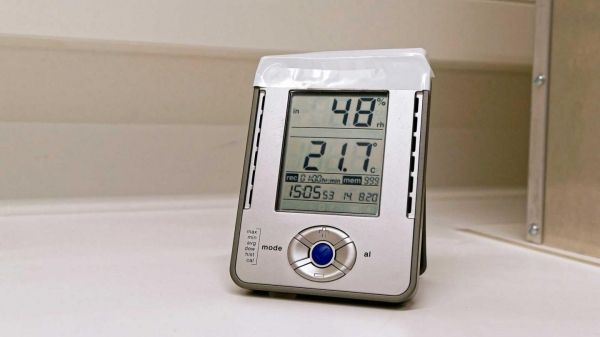The airborne transmission of the coronavirus SARS-CoV-2 via aerosol particles in indoor environment seems to be strongly influenced by relative humidity. This is the conclusion drawn by researchers from the Leibniz Institute for Tropospheric Research (TROPOS) in Leipzig and the CSIR National Physical Laboratory in New Delhi from the analysis of 10 most relevant international studies on the subject. Therefore, they recommend controlling the indoor air in addition to the usual measures such as social distancing and masks. A relative humidity of 40 to 60 percent could reduce the spread of the viruses and their absorption through the nasal mucous membrane. To contain the COVID-19 pandemic, it is therefore extremely important to implement standards for indoor air humidity in rooms with many people, such as hospitals, open-plan offices or public transport, writes the research team in the scientific journal Aerosol and Air Quality Research.
According to the WHO, the coronavirus SARS-CoV-2 has led to at least 21 million infected persons and over 750,000 deaths worldwide in over half a year. The health and economic effects of the pandemic pose major social challenges for practically all countries. Worldwide, therefore, ways are being sought to stem the spread of the virus in order to avoid drastic measures such as lockdowns and contact restrictions. For a long time, the main transmission route of viral droplets was considered to be direct human-to-human contact, because of infected people sneezing or coughing and secreting the virus. Because these drops are relatively large and heavy, they fall very quickly to the ground and can only cover very short distances in the air. The recommendation to keep a minimum distance of 1.5m to 2m (social distancing) is based on this assumption. Recently, however, COVID-19 outbreaks have also been recorded, which seem to be due to the simultaneous presence of many people in one room (choir rehearsals, slaughterhouses, etc.). A safety distance of 1.5m is apparently not sufficient when infected and healthy people are together in one room for a long time. For example, Dutch researchers have now been able to prove that tiny drops of 5 micrometres in diameter, such as those produced when speaking, can float in the air for up to 9 minutes. In July, 239 scientists from 32 countries - including the chemist Prof. Hartmut Herrmann from TROPOS - therefore appealed to the World Health Organization (WHO) to focus more closely on the long-lived infectious particles suspended in the air. In order to contain the spread via the aerosol particles floating in the air, the researchers recommend not only continuing to wear masks but also, and above all, good indoor ventilation.
Read more at Leibniz Institute for Tropospheric Research (TROPOS)
Image: The relative humidity in rooms apparently plays an important role in the spread of the new coronavirus SARS-CoV-2. Researchers from India and Germany are recommending therefore, in addition to the previously customary measures such as spacing and masks, the room air should also be controlled so that the air humidity does not fall below 40 percent. (Credit: Tilo Arnhold, TROPOS)


